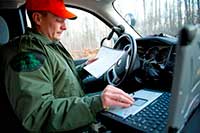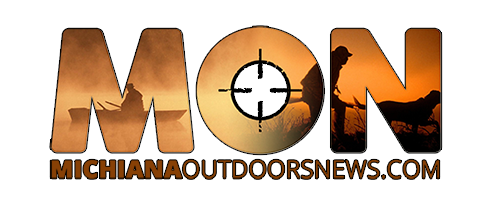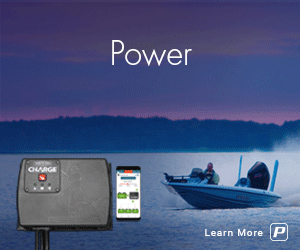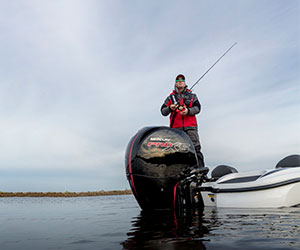
What's New?

Rain didn’t dampen the spirits of 14 Casting Couples contestants in the season finale at Magician Lake last weekend.

Man, you talk about a close finish! It doesn’t get much closer than what the Arjay’s Classic experienced at Paw Paw Lake on Saturday.

New Gear
The ClapTail™ 110 is a topwater bait with a metal prop and back blade that collide when retrieved, producing a unique two-tone fish-attracting sound.
Newsflash
Late Goose Season Opens Feb. 1
- Details
Indiana will again offer a late season for Canada geese that targets urban geese.
The season runs Feb. 1-15 in the following counties in northern Indiana: Adams, Allen, DeKalb, Elkhart, Kosciusko, LaPorte, LaGrange, Marshall, Noble, St. Joseph, Steuben, Starke, and Whitley.
The bag limit is three Canada geese per day (possession limit 9) while shooting hours are from one-half hour before sunrise to sunset. Hunters must have an Indiana hunting license, Indiana waterfowl stamp, federal waterfowl stamp, and a HIP number to participate.
Michigan's Poaching Hotline Helps Get the Bad Guys
- Details
(Provided by Michigan DNR)
 Field officers maintain contact with the RAP room when a report is filed.The sign - Law Enforcement Communications Section - is as nondescript as the standard office door on an unadorned white wall deep within the recesses of Lansing's Constitution Hall.
Field officers maintain contact with the RAP room when a report is filed.The sign - Law Enforcement Communications Section - is as nondescript as the standard office door on an unadorned white wall deep within the recesses of Lansing's Constitution Hall.
But inside that secured door is a non-stop center of activity: the RAP Room.
The RAP (Report All Poaching) Room is staffed 24/7 by as many as seven personnel at a time. It is the main link between the public and the Michigan DNR Law Enforcement Division.
The Report All Poaching hotline was created in 1980 when the state Legislature designated a small percentage of the money raised by hunting and fishing license sales toward developing an easy method for citizens to report illegal hunting and fishing activity to the DNR. It has grown into a 1,000-square-foot room, outfitted with the kind of high-tech equipment one often finds at county or state regional dispatch centers. At each of the workstations, six computer dispatchers working in the RAP Roomscreens give dispatchers as much information as they could possibly need to direct the state's conservation officers to the scene of a complaint - and what the COs need to know once they get there.
Computer screens display information on the current location of COs (through the GPS monitoring equipment on their patrol vehicles), as well as access to the state's Law Enforcement Information Network, the state's licensing records, the radio system, the Internet, and even the criminal history of those whom the COs contact.
Page 138 of 267













Connect With Us